この記事を読んで分かること
- Object Detection APIを使った推論方法
- tensorflow(v1)を使った物体検出の手順
実行環境
Tensorflow Object Detection APIの学習手順
環境の確認
必要なライブラリをimportします。
import tensorflow as tf import os, subprocess, re import numpy as np from PIL import Image from matplotlib import pyplot as plt import shutil import json from google.protobuf import text_format import pprint import random from pathlib import Path from google.protobuf import text_format %matplotlib inline
tensorflowのバージョンを確認します。
print(tf.__version__)「1.14.0」と表示されれば正しいバージョンで動いています。
object Detection apiのインストール
まずは、TensorFlow Object DetectionAPIのソースコードを取得します。
tensorflow object DetectionAPIのソースコードからgit cloneしています。
! rm -rf ./models && git clone --depth 1 https://github.com/tensorflow/models.git -b v1.13.0 \
&& sed -i "s#ImageFont.truetype('arial.ttf', 24)#ImageFont.truetype('arial.ttf', 50)#g" ./models/research/object_detection/utils/visualization_utils.py \
&& cp /usr/share/fonts/truetype/dejavu/DejaVuSans.ttf /usr/share/fonts/truetype/dejavu/arial.ttf公式の手順通りインストールしていきます。
# install object_detection library
! pip3 install pycocotools > /dev/null
! cd ./models/research && \
protoc object_detection/protos/*.proto --python_out=. && \
python3 setup.py build > /dev/null && \
python3 setup.py bdist_wheel > /dev/null
! python3 -m pip install --no-cache-dir ./models/research/dist/object_detection-0.1-py3-none-any.whl > /dev/null
! cd ./models/research/slim && \
python3 setup.py bdist_wheel > /dev/null
! python3 -m pip install --no-cache-dir ./models/research/slim/dist/slim-0.1-py3-none-any.whl > /dev/null%%bash
cd models-master/research/
protoc object_detection/protos/*.proto --python_out=.
cp object_detection/packages/tf2/setup.py .
python -m pip install .正しくインストールできているか確認します。
!python3 ./models/research/object_detection/builders/model_builder_test.pyOK (skipped=1)と表示されれば成功です。
モデルの準備
先程インストールしたObject DetectionAPIのライブラリをimportします。
from object_detection.utils import dataset_util, label_map_util
from object_detection.dataset_tools.create_coco_tf_record import create_tf_example
from object_detection.protos import string_int_label_map_pb2
from object_detection.protos import pipeline_pb2
from object_detection.utils import visualization_utils as vis_util転移学習の元になるモデルを指定します。
ここでは、SSD(mobilenetv2)をcocoデータセットで学習したモデルを使います。
ダウンロード先は「DATA_DIR」で指定したディレクトリになります。
MODEL = 'ssd_mobilenet_v2_coco_2018_03_29' DATA_DIR = './nn-models' MODEL_DIR = os.path.join(DATA_DIR, MODEL) URL = 'http://download.tensorflow.org/models/object_detection/%s.tar.gz' % MODEL DOWNLOAD_PATH = '%s/%s.tar.gz' % (DATA_DIR, MODEL)
関数の定義をしていきます。
from tensorflow.python.util import compat
from tensorflow.core.protobuf import saved_model_pb2
def reconstruct(pb_path):
if not os.path.isfile(pb_path):
print("Error: %s not found" % pb_path)
print("Reconstructing Tensorflow model")
detection_graph = tf.Graph()
with detection_graph.as_default():
od_graph_def = tf.compat.v1.GraphDef()
with tf.io.gfile.GFile(pb_path, 'rb') as fid:
serialized_graph = fid.read()
od_graph_def.ParseFromString(serialized_graph)
tf.import_graph_def(od_graph_def, name='')
print("Success!")
return detection_graph
def download():
print("Downloading %s.." % MODEL)
p = subprocess.run(['wget', '--show-progress', '--progress=bar:force', '-O', DOWNLOAD_PATH, URL])
print("Unpacking..")
p = subprocess.run(['tar', 'zxvf', DOWNLOAD_PATH, '-C', DATA_DIR])
p = subprocess.run(['rm', DOWNLOAD_PATH])
print("Checking..")
pbfile = os.path.join(MODEL_DIR, 'frozen_inference_graph.pb')
reconstruct(pbfile)モデルのダウンロードをします。
if not os.path.exists(DATA_DIR):
subprocess.run(['mkdir', DATA_DIR])
if os.path.exists(MODEL_DIR):
subprocess.run(['rm', '-r', MODEL_DIR])
subprocess.run(['mkdir', MODEL_DIR])
download()モデルの再構築
転移学習で使うラベルとクラス数を決めておきます。
PB_PATH = "./nn-models/ssd_mobilenet_v2_coco_2018_03_29/frozen_inference_graph.pb" LABEL_PATH = './models/research/object_detection/data/mscoco_label_map.pbtxt' NCLASSES = 60
モデルの再構築に必要な関数を定義します。
def image2np(image):
(w, h) = image.size
return np.array(image.getdata()).reshape((h, w, 3)).astype(np.uint8)
def image2tensor(image):
npim = image2np(image)
return np.expand_dims(npim, axis=0)
%matplotlib inline
def detect(detection_graph, test_image_path):
with detection_graph.as_default():
gpu_options = tf.compat.v1.GPUOptions(per_process_gpu_memory_fraction=0.01)
with tf.compat.v1.Session(graph=detection_graph,config=tf.compat.v1.ConfigProto(gpu_options=gpu_options)) as sess:
image_tensor = detection_graph.get_tensor_by_name('image_tensor:0')
detection_boxes = detection_graph.get_tensor_by_name('detection_boxes:0')
detection_scores = detection_graph.get_tensor_by_name('detection_scores:0')
detection_classes = detection_graph.get_tensor_by_name('detection_classes:0')
num_detections = detection_graph.get_tensor_by_name('num_detections:0')
image = Image.open(test_image_path)
(boxes, scores, classes, num) = sess.run(
[detection_boxes, detection_scores, detection_classes, num_detections],
feed_dict={image_tensor: image2tensor(image)}
)
npim = image2np(image)
vis_util.visualize_boxes_and_labels_on_image_array(
npim,
np.squeeze(boxes),
np.squeeze(classes).astype(np.int32),
np.squeeze(scores),
category_index,
use_normalized_coordinates=True,
line_thickness=15)
plt.figure(figsize=(12, 8))
plt.imshow(npim)
plt.showモデルを再構築します。
detection_graph = reconstruct(PB_PATH)
ラベルをマッピングします。
label_map = label_map_util.load_labelmap(LABEL_PATH) categories = label_map_util.convert_label_map_to_categories(label_map, max_num_classes=NCLASSES, use_display_name=True) category_index = label_map_util.create_category_index(categories)
再構築したモデルで動作確認します。
detect(detection_graph, './models/research/object_detection/test_images/image2.jpg')
オリジナルデータの準備
学習に使うデータセットのパスを指定します。
TACO_DIR = './data/garbagedetection/TACO'
DATA_DIR = '/notebooks/git/DeepLearning/object_detection/data'
IMAGES_SUB_DIR = 'images'
IMAGES_DIR = os.path.join(TACO_DIR, IMAGES_SUB_DIR)
ANNOTATIONS_FILE = os.path.join(DATA_DIR, 'annotations.json')
TRAIN_PROP = .80
SEED = 123
if not os.path.exists(IMAGES_DIR):
subprocess.run(['mkdir', '-p', IMAGES_DIR])
with open(ANNOTATIONS_FILE) as json_file:
data = json.load(json_file)
images = data['images']
categories = data['categories']
annotations = data['annotations']
images_annotations = []
for idx, image in enumerate(images):
image_id = int(image['id'])
random_number = idx
file_name = image['file_name']
# rename files to unique numbers
new_file_name = '%s.jpg' % str(random_number)
file_location = '%s/%s' % (DATA_DIR, file_name)
new_file_location = '%s/%s' % (IMAGES_DIR, new_file_name)
if os.path.isfile(file_location):
# print('renamed: %s to %s' % (file_location, new_file_location))
shutil.copy(file_location, new_file_location)
image['file_name'] = new_file_name
image['folder'] = DATA_DIR
# get annotations for the image
_annotations = [a for a in annotations if int(a['image_id']) == image_id]
# something wrong with y coordinates in data
for a in _annotations:
(x,y,w,h) = a['bbox']
a['bbox'][1] = image['height'] - y - h
images_annotations.append((image, _annotations))データを学習用、バリデーション用、テスト用に分割します。
np.random.seed(SEED)
images_annotations_idx = range(0,len(images_annotations))
images_annotations_train_idx = np.random.choice(
len(images_annotations),
size=int(len(images_annotations)*TRAIN_PROP),
replace=False
)
images_annotations_train = [images_annotations[i] for i in images_annotations_train_idx]
images_annotations_val_idx = np.random.choice(
list(set(images_annotations_idx)-set(images_annotations_train_idx)),
size=int(len(images_annotations_idx)*(1-TRAIN_PROP)/2),
replace=False
)
images_annotations_val = [images_annotations[i] for i in images_annotations_val_idx]
images_annotations_test_idx = list(set(images_annotations_idx)-set(images_annotations_train_idx)-set(images_annotations_val_idx))
images_annotations_test = [images_annotations[i] for i in images_annotations_test_idx]
print(
'''
# TRAIN IMAGES: %d
# VALIDATION IMAGES: %d
# TEST IMAGES: %d
''' % (len(images_annotations_train), len(images_annotations_val), len(images_annotations_test))
)ラベルとカテゴリを読み込みます。
LABEL_PATH = os.path.join(TACO_DIR, 'labelmap.pbtxt')
if not os.path.exists(LABEL_PATH):
print('Building label map from examples')
from object_detection.protos import string_int_label_map_pb2
from google.protobuf import text_format
labelmap = string_int_label_map_pb2.StringIntLabelMap()
for category in categories:
item = labelmap.item.add()
# label map id 0 is reserved for the background label
item.id = int(category['id'])+1
item.name = category['name']
with open(LABEL_PATH, 'w') as f:
f.write(text_format.MessageToString(labelmap))
print('Label map witten to labelmap.pbtxt')
else:
print('Reusing existing labelmap.pbtxt')
with open(LABEL_PATH, 'r') as f:
pprint.pprint(f.readlines())
label_map = label_map_util.load_labelmap(LABEL_PATH)
categories = label_map_util.convert_label_map_to_categories(label_map, max_num_classes=NCLASSES, use_display_name=True)
category_index = label_map_util.create_category_index(categories)tfrecordの形式に変換します。
def build_tfrecords(dataset, output_path, images_annotations, category_index):
writer = tf.compat.v1.python_io.TFRecordWriter(output_path)
label_map_dict = label_map_util.get_label_map_dict(LABEL_PATH)
print("Building TFRecord files for dataset: %s" % dataset)
for idx, (image, _annotations) in enumerate(images_annotations):
if idx % 100 == 0:
print('%d of %d annotations' % (idx, len(images_annotations)))
_, tf_example, num_annotations_skipped = create_tf_example(
image=image,
annotations_list=_annotations,
image_dir=IMAGES_DIR,
category_index=category_index,
include_masks=False
)
writer.write(tf_example.SerializeToString())
writer.close()
print("Done!")# need a category_index here 0 based for making tf-records
_category_index = label_map_util.create_category_index(data['categories'])
datasets = [('train', images_annotations_train), ('test', images_annotations_test), ('val', images_annotations_val)]
for dataset,images_annotations in datasets:
output_path = os.path.join(TACO_DIR, '%s.record' % dataset)
build_tfrecords(dataset, output_path, images_annotations, _category_index)学習用の設定を作成
学習の条件を決めます。
BATCH_SIZE = 12 # 24 BATCH_NMS_SCORE_THRESHOLD = .1 TENSORBOARD_NUM_IMAGES = 20
SRC_CONFIG_TEMPLATE_PATH = './nn-models/ssd_mobilenet_v2_coco_2018_03_29/pipeline.config'
SRC_CHECKPOINT_PATH = './nn-models/ssd_mobilenet_v2_coco_2018_03_29/model.ckpt'
MODEL_DIR = './nn-models/garbagedetection/ssd_mobilenet_v2/'
DATA_DIR = './data/garbagedetection/TACO/data/'
CHECKPOINT_PATH_HOST = os.path.join(MODEL_DIR, 'model.ckpt')
LABEL_MAP_PATH_HOST = os.path.join(TACO_DIR, 'labelmap.pbtxt')
TRAIN_RECORDS_PATH_HOST = os.path.join(TACO_DIR, 'train.record')
VAL_RECORDS_PATH_HOST = os.path.join(TACO_DIR, 'val.record')label_map_dict = label_map_util.get_label_map_dict(os.path.join(TACO_DIR, 'labelmap.pbtxt')) NUM_CLASSES = len(label_map_dict.keys())
print('''
Config parameters:
CHECKPOINT_PATH_HOST = %s
LABEL_MAP_PATH_HOST = %s
TRAIN_RECORDS_PATH_HOST = %s
VAL_RECORDS_PATH_HOST = %s
BATCH_SIZE = %d
NUM_CLASSES = %d
BATCH_NMS_SCORE_THRESHOLD = %f
TENSORBOARD_NUM_IMAGES = %d
''' % (
CHECKPOINT_PATH_HOST,
LABEL_MAP_PATH_HOST,
TRAIN_RECORDS_PATH_HOST,
VAL_RECORDS_PATH_HOST,
BATCH_SIZE,
NUM_CLASSES,
BATCH_NMS_SCORE_THRESHOLD,
TENSORBOARD_NUM_IMAGES
))%%bash
echo "
diff --git a/models/ssd_mobilenet_v2_coco_2018_03_29/pipeline.config b/pipeline.config
index 1853c65..0b459dd 100755
--- a/models/ssd_mobilenet_v2_coco_2018_03_29/pipeline.config
+++ b/pipeline.config
@@ -32,7 +32,6 @@ model {
train: true
}
}
- batch_norm_trainable: true
use_depthwise: true
}
box_coder {
" > ssd_mobilenet_v2_coco_2018_03_29_pipeline.config.patch! patch -N './nn-models/ssd_mobilenet_v2_coco_2018_03_29/pipeline.config' < ./ssd_mobilenet_v2_coco_2018_03_29_pipeline.config.patch
pipeline_config = pipeline_pb2.TrainEvalPipelineConfig()
with tf.compat.v2.io.gfile.GFile(SRC_CONFIG_TEMPLATE_PATH, "r") as f:
proto_str = f.read()
text_format.Merge(proto_str, pipeline_config)pipeline_config.model.ssd.num_classes = NUM_CLASSES pipeline_config.train_config.batch_size = BATCH_SIZE pipeline_config.train_config.fine_tune_checkpoint = CHECKPOINT_PATH_HOST pipeline_config.train_input_reader.tf_record_input_reader.input_path[0] = TRAIN_RECORDS_PATH_HOST pipeline_config.train_input_reader.label_map_path = LABEL_MAP_PATH_HOST pipeline_config.eval_input_reader[0].tf_record_input_reader.input_path[0] = VAL_RECORDS_PATH_HOST pipeline_config.eval_input_reader[0].label_map_path = LABEL_MAP_PATH_HOST pipeline_config.model.ssd.post_processing.batch_non_max_suppression.score_threshold = BATCH_NMS_SCORE_THRESHOLD pipeline_config.eval_config.num_visualizations = TENSORBOARD_NUM_IMAGES
if not os.path.exists(MODEL_DIR):
subprocess.run(['mkdir', '-p', MODEL_DIR])
config_text = text_format.MessageToString(pipeline_config)
with tf.compat.v2.io.gfile.GFile(os.path.join(MODEL_DIR, 'pipeline.config'), "wb") as f:
f.write(config_text)学習
! cp -r $SRC_CHECKPOINT_PATH\.* $MODEL_DIR
MODEL_ROOT_DIR = './nn-models/garbagedetection/ssd_mobilenet_v2' CONFIG_PATH = os.path.join(MODEL_ROOT_DIR, 'pipeline.config') TRAINING_STEPS = 10 EVAL_STEPS = 10
! python3 ./models/research/object_detection/model_main.py \
--pipeline_config_path=$CONFIG_PATH \
--model_dir=$MODEL_ROOT_DIR \
--alsologtostderr \
--num_train_steps=$TRAINING_STEPS \
--num_eval_steps=$EVAL_STEPStrained_detection_graph = reconstruct('./nn-models/garbagedetection/ssd_mobilenet_v2/frozen_inference_graph.pb')detect(trained_detection_graph, '/notebooks/git/DeepLearning/object_detection/data/batch_1/000000.jpg')
推論の実行
推論を実行します。
trained_detection_graph = reconstruct('/notebooks/git/DeepLearning/object_detection//ssd_mobilenet_v2_taco_2018_03_29.pb')以上でtensorflow1.14.0環境での物体検出の学習の手順は終わりです。

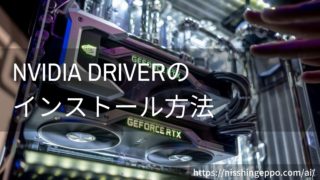

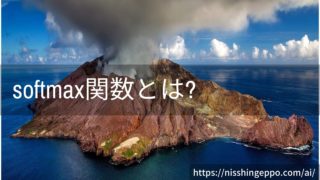







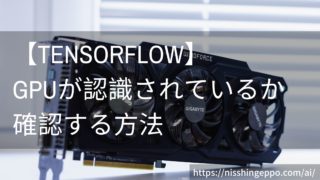





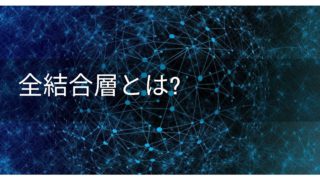
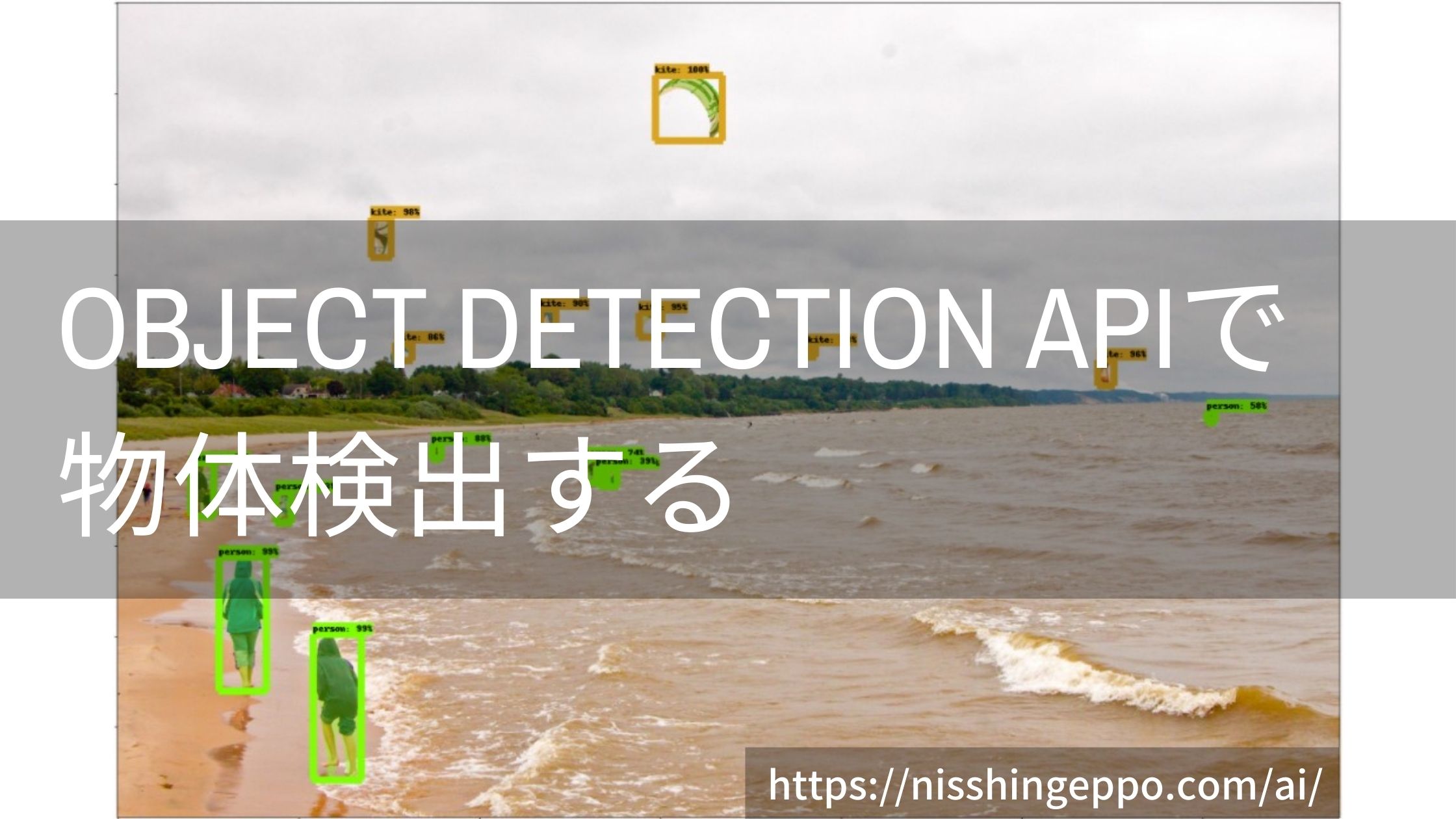


コメント